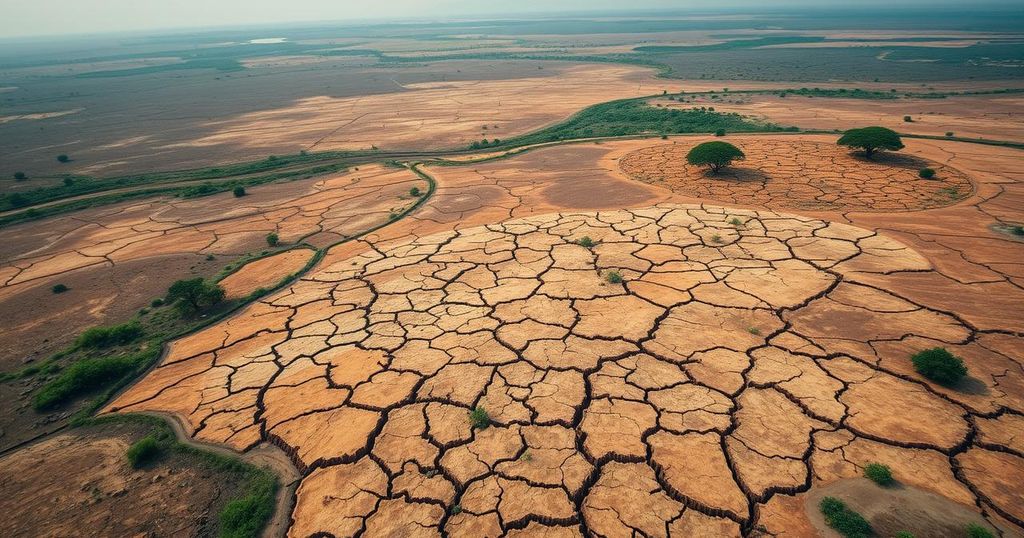Southern Africa faces its worst drought in a century, affecting over 27 million people and leading to widespread malnutrition among children. Several countries have declared national disasters, and the situation is likely to worsen until the next harvest. Climate change and the El Niño phenomenon have compounded the difficulties faced by vulnerable agricultural communities.
Southern Africa is currently experiencing the most severe drought in a century, impacting over 27 million individuals and leaving 21 million children malnourished, according to the United Nations World Food Programme (WFP). States such as Lesotho, Malawi, Namibia, Zambia, and Zimbabwe have recently declared national disasters as the ongoing drought has ravaged crops and rendered livestock unsustainable. The crisis has also extended to Angola and Mozambique, with expectations for its aggravation until the next harvest period, projected for March or April of the following year. WFP spokesperson Tomson Phiri reported, “A historic drought – the worst food crisis yet – has devastated more than 27 million lives across the region… Crops have failed, livestock have perished, and children are lucky to receive one meal per day.” As of October, the onset of the lean season compounds the challenge, with predictions of growing distress as each month progresses towards the next harvest. The reliance on small-scale, rain-fed agriculture renders tens of millions in the region vulnerable to these conditions. Aid organizations had previously cautioned against the impending disaster as the El Niño weather event resulted in insufficient rainfall. This issue has been exacerbated by climate change-induced rising temperatures. Reports further indicate that Zambia has lost 70 percent of its harvest, while Zimbabwe experiences a loss of 80 percent, as conveyed by WFP’s acting regional director for southern Africa, Lola Castro. Furthermore, the drought has adversely affected hydropower capacity, leading to significant electricity shortages, while authorities in Zimbabwe and Namibia have begun culling wildlife, including elephants, to alleviate food shortages. Scholarly assessments indicate that sub-Saharan Africa ranks among the most climate-vulnerable regions globally, primarily due to its dependence on rain-fed agriculture and natural resources, rendering millions susceptible to climate variability. The dire need for climate-resilient strategies persists, yet many impoverished nations lack the financial capability to implement such measures. Additionally, experts assert that climate change has a deleterious effect on crop yields, nutritional quality, and harvesting periods, further complicating the crisis.
The present drought across Southern Africa represents an unprecedented environmental challenge, influenced significantly by climate change and exacerbated by the El Niño weather phenomenon. This combination has resulted in severe rainfall shortages, predominately affecting countries reliant upon rain-fed agriculture. The ramifications of this crisis extend beyond nutrition, leading to extensive livestock mortality, compromised food security, and disruptions in energy supply due to reduced hydropower generation. This crisis disproportionately impacts vulnerable communities, especially children, as observed in malnutrition rates and scarcity of food resources.
The ongoing drought in Southern Africa is a humanitarian crisis of significant proportions, affecting millions and prompting urgent national disaster declarations from multiple countries. The combination of diminished rainfall, the effects of climate change, and rising temperatures threaten agricultural output and food security. With a considerable portion of the population dependent on agriculture for sustenance, immediate action is imperative to address malnutrition and food shortages. This situation underscores the necessity for enhanced resilience strategies against climate change, particularly in regions most susceptible to such adversities.
Original Source: www.aljazeera.com







